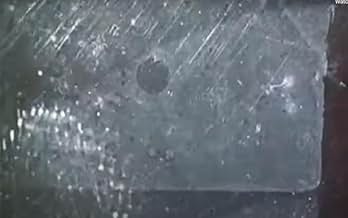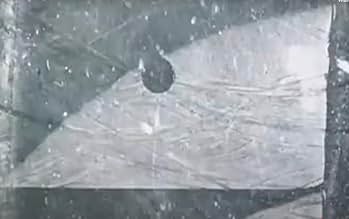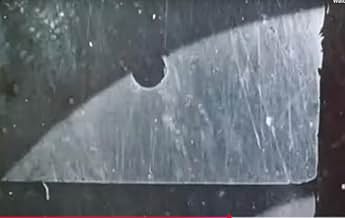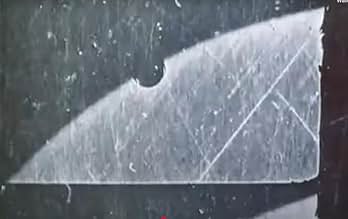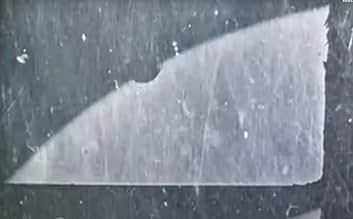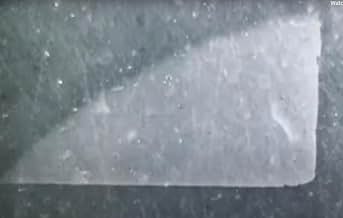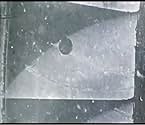Passage de Venus
- 1874
- 1min
PUNTUACIÓN EN IMDb
6,8/10
2,4 mil
TU PUNTUACIÓN
Cronofotografía temprana del tránsito de Venus de 1874, capturada por Jules Janssen en Japón utilizando su "revólver fotográfico" para la investigación científica.Cronofotografía temprana del tránsito de Venus de 1874, capturada por Jules Janssen en Japón utilizando su "revólver fotográfico" para la investigación científica.Cronofotografía temprana del tránsito de Venus de 1874, capturada por Jules Janssen en Japón utilizando su "revólver fotográfico" para la investigación científica.
- Dirección
Reseñas destacadas
How could anyone (besides an idiot) give this short such a low rating? I'm annoyed at what I'm seeing. This is one of the first attempts at making a film, and you idiots give it a 2? A 3? That is really poor on your part. I'll tell you why.
First of all, where do you think today's movies came from? Did cinema evolve out of nowhere? Of course not! Cinema had to progress. People had to get their ideas, experiment, mess around, whatever. You cannot give this such a low rating! Yes, it's a scratchy mess, and impossible to identify what it's about, but you have to start somewhere. So maybe it's not exactly a great film in itself, but still deserves at least a 7.
The guy who gave it a 10 was really thinking about it. He understood. You cannot criticize it for its scratchiness or anything. The fact it is one of the earliest attempts at filmmaking is enough.
I will admit it's not a true film. As IMDb's summary states, it is merely photographs, and is not 'filmed', per say, on a filmstrip. The first true celluloid film was Louis le Prince's "Roundhay Garden Scene" in 1888, but until then this is an important movie suggesting the beginning of our medium. It is also important because the event it portrays is a once-in-a-lifetime experience that we wouldn't be able to witness today. But, thanks to Pierre Janssen, we can.
First of all, where do you think today's movies came from? Did cinema evolve out of nowhere? Of course not! Cinema had to progress. People had to get their ideas, experiment, mess around, whatever. You cannot give this such a low rating! Yes, it's a scratchy mess, and impossible to identify what it's about, but you have to start somewhere. So maybe it's not exactly a great film in itself, but still deserves at least a 7.
The guy who gave it a 10 was really thinking about it. He understood. You cannot criticize it for its scratchiness or anything. The fact it is one of the earliest attempts at filmmaking is enough.
I will admit it's not a true film. As IMDb's summary states, it is merely photographs, and is not 'filmed', per say, on a filmstrip. The first true celluloid film was Louis le Prince's "Roundhay Garden Scene" in 1888, but until then this is an important movie suggesting the beginning of our medium. It is also important because the event it portrays is a once-in-a-lifetime experience that we wouldn't be able to witness today. But, thanks to Pierre Janssen, we can.
This hits hard
the way venus transits across the sun just hits very different nowadays and i can't believe that this was only 5 seconds and deserves to be way longer.
the way venus transits across the sun just hits very different nowadays and i can't believe that this was only 5 seconds and deserves to be way longer.
To most this may look simply like a home movie. But it's labeled the first movie ever actually made on IMDb. That's no small accomplishment. This 1-2 second movement of Venus across the sun is not only mentally exciting, but also incredibly groundbreaking. I myself cannot confirm if it's actually Venus going across the sun, but if it is, it also showcases an excellent appearance of space movement, which was still in its relative infancy in photography.
I doubt this was actually filmed frame by frame. They could've most likely just took a few photographs on a standstill camera and wrapped them all together to create the illusion of movement. But hey. Isn't that what stop motion is about? So not only is it the first movie ever, the first movie to show the sun looking good, it's also the first stop motion movie ever made. Isn't that incredible?
I probably would've given this a lower rating if it was newer, but since it's the first of it's kind, I think it's well deserving of a 9.
I doubt this was actually filmed frame by frame. They could've most likely just took a few photographs on a standstill camera and wrapped them all together to create the illusion of movement. But hey. Isn't that what stop motion is about? So not only is it the first movie ever, the first movie to show the sun looking good, it's also the first stop motion movie ever made. Isn't that incredible?
I probably would've given this a lower rating if it was newer, but since it's the first of it's kind, I think it's well deserving of a 9.
OR IS IT?
It is true that this is the very first sequential photographic series put to motion ever produced, there is an elephant in the room that needs to be addressed. The tragedy is that this is not actually the heavenly body of Venus passing before the great burning day ball in the sky. It is in fact, the world's first screen test, as these are only models, placeholders made to test the plates which would be used for the real deal. Regrettably, the actual footage of the Venusian transit may be lost forever. According to Wikipedia, "A 2005 study of the surviving material concluded that all the extant plates made with the photographic revolver are practice plates shot with a model and that none of the many plates successfully exposed during the eclipse seem to have survived."
Yet we must interpret it as it is: A film. Indeed, it is fitting that man's first foray into something so invariably groundbreaking in influence, cultural impact and importance to art as film is indeed, baby steps, waddling up towards the stars. Or at least, the pretend ones spinning above the nascent medium's crib in its nursery. If we play along with this vision, we cannot help but be in awe of man's great scope for this technology's use, to chart astrological and scientific phenomena, to revolutionize the preservation of once in a lifetime events, and indeed attain near-apotheosis in achieving the ability to preserve, simulate and replay life itself as long as the powers and mediums employed would hold. It is staggering in and of itself that this alone survived into the age where it could be immortalized nearly forever, to inspire every generation with proof that even in simulacra, man has always been driven to achievement by gazing upon the wonders within the stars.
It is true that this is the very first sequential photographic series put to motion ever produced, there is an elephant in the room that needs to be addressed. The tragedy is that this is not actually the heavenly body of Venus passing before the great burning day ball in the sky. It is in fact, the world's first screen test, as these are only models, placeholders made to test the plates which would be used for the real deal. Regrettably, the actual footage of the Venusian transit may be lost forever. According to Wikipedia, "A 2005 study of the surviving material concluded that all the extant plates made with the photographic revolver are practice plates shot with a model and that none of the many plates successfully exposed during the eclipse seem to have survived."
Yet we must interpret it as it is: A film. Indeed, it is fitting that man's first foray into something so invariably groundbreaking in influence, cultural impact and importance to art as film is indeed, baby steps, waddling up towards the stars. Or at least, the pretend ones spinning above the nascent medium's crib in its nursery. If we play along with this vision, we cannot help but be in awe of man's great scope for this technology's use, to chart astrological and scientific phenomena, to revolutionize the preservation of once in a lifetime events, and indeed attain near-apotheosis in achieving the ability to preserve, simulate and replay life itself as long as the powers and mediums employed would hold. It is staggering in and of itself that this alone survived into the age where it could be immortalized nearly forever, to inspire every generation with proof that even in simulacra, man has always been driven to achievement by gazing upon the wonders within the stars.
This is the oldest thing listed on the entire IMDb. I'm glad to have discovered this neat trick where you can literally look at any submission on the entire website. You just type in a keyword and then get rid of the check in the box. This website has literally 5.3 million entries! It's quite nice to get to see the first one. I believe "Roundhay Garden Scene" was technically the first movie ever made.
This is actually a series of photographs, so it probably doesn't count as a movie. It's only 5 seconds long, but it's great to see history in motion! Of course, it's very low quality. I imagine this would be in the public domain so it shouldn't be hard to find. Weird when I make a review longer than the actual entry! I'm sure you have time to see this. ***
This is actually a series of photographs, so it probably doesn't count as a movie. It's only 5 seconds long, but it's great to see history in motion! Of course, it's very low quality. I imagine this would be in the public domain so it shouldn't be hard to find. Weird when I make a review longer than the actual entry! I'm sure you have time to see this. ***
¿Sabías que...?
- CuriosidadesThe oldest movie listed on IMDb.
- ConexionesFeatured in The Origins of Scientific Cinematography: The Pioneers (1990)
Selecciones populares
Inicia sesión para calificar y añadir a tu lista para recibir recomendaciones personalizadas
Detalles
- Fecha de lanzamiento
- País de origen
- Idioma
- Títulos en diferentes países
- Transit of Venus
- Localizaciones del rodaje
- Japón(entire film)
- Ver más compañías en los créditos en IMDbPro
- Duración1 minuto
- Color
- Mezcla de sonido
- Relación de aspecto
- 1.33 : 1
Contribuir a esta página
Sugerir un cambio o añadir el contenido que falta

Principal laguna de datos
By what name was Passage de Venus (1874) officially released in Japan in Japanese?
Responde
